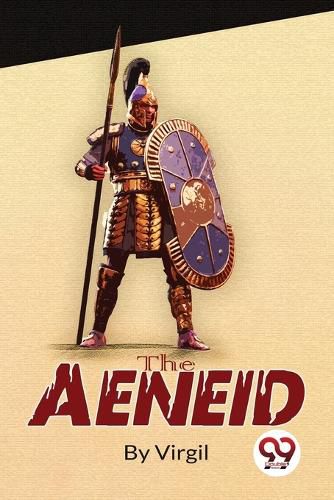Readings Newsletter
Become a Readings Member to make your shopping experience even easier.
Sign in or sign up for free!
You’re not far away from qualifying for FREE standard shipping within Australia
You’ve qualified for FREE standard shipping within Australia
The cart is loading…






This title is printed to order. This book may have been self-published. If so, we cannot guarantee the quality of the content. In the main most books will have gone through the editing process however some may not. We therefore suggest that you be aware of this before ordering this book. If in doubt check either the author or publisher’s details as we are unable to accept any returns unless they are faulty. Please contact us if you have any questions.
The Latin epic poem The Aeneid, which was written between 29 and 19 BC by Virgil, narrates the narrative of Aeneas, a Trojan who fled the collapse of Troy and made his way to Italy, where he eventually settled and became the progenitor of the Romans. It has 9,896 dactylic hexameter lines. The poem's second half describes the Trojans' eventually successful fight against the Latins, under whose name Aeneas and his Trojan followers are destined to be absorbed. The wanderings of Aeneas from Troy to Italy are detailed in the first six of the poem's twelve books. Greco-Roman myth and legend were already familiar with the hero Aeneas because he appeared in the Iliad. The Aeneid was transformed by Virgil from the disjointed tales of Aeneas' wanderings, his hazy connection to the founding of Rome, and his description as a personage of no fixed characteristics other than scrupulous pietas into a compelling founding myth or national epic that connected Rome to the Troyan legends, explained the Punic Wars, exalted traditional Roman virtues, and validated the Julio-Claudian dynasty. One of the best pieces of Latin literature and largely recognized as Virgil's masterpiece is The Aeneid.
$9.00 standard shipping within Australia
FREE standard shipping within Australia for orders over $100.00
Express & International shipping calculated at checkout
This title is printed to order. This book may have been self-published. If so, we cannot guarantee the quality of the content. In the main most books will have gone through the editing process however some may not. We therefore suggest that you be aware of this before ordering this book. If in doubt check either the author or publisher’s details as we are unable to accept any returns unless they are faulty. Please contact us if you have any questions.
The Latin epic poem The Aeneid, which was written between 29 and 19 BC by Virgil, narrates the narrative of Aeneas, a Trojan who fled the collapse of Troy and made his way to Italy, where he eventually settled and became the progenitor of the Romans. It has 9,896 dactylic hexameter lines. The poem's second half describes the Trojans' eventually successful fight against the Latins, under whose name Aeneas and his Trojan followers are destined to be absorbed. The wanderings of Aeneas from Troy to Italy are detailed in the first six of the poem's twelve books. Greco-Roman myth and legend were already familiar with the hero Aeneas because he appeared in the Iliad. The Aeneid was transformed by Virgil from the disjointed tales of Aeneas' wanderings, his hazy connection to the founding of Rome, and his description as a personage of no fixed characteristics other than scrupulous pietas into a compelling founding myth or national epic that connected Rome to the Troyan legends, explained the Punic Wars, exalted traditional Roman virtues, and validated the Julio-Claudian dynasty. One of the best pieces of Latin literature and largely recognized as Virgil's masterpiece is The Aeneid.